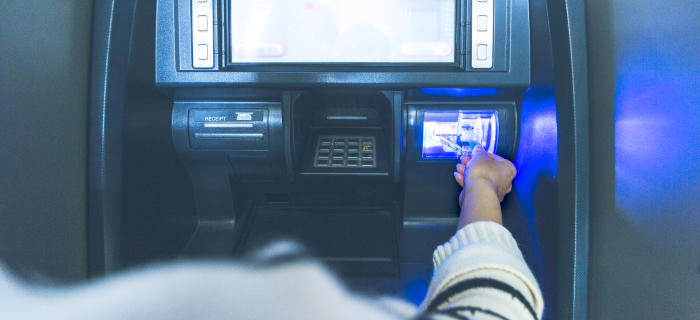Access to cash is a serious issue in the UK and the pandemic isn’t helping, with 22% of UK respondents to a Mastercard survey saying they’ve stopped using it entirely.
This is backed by Bank of England’s latest findings, which indicated that the volume and value of cash withdrawn from the ATM network overseen by LINK were roughly 60% lower in late March 2020 compared with the same period in 2019.
That said, cash is however still in use and one of the most used form of payment – it is banks’ responsibility to guarantee access to cash via cashback, ATMs, and branches for everyone for the long-term.
This blog will deep-dive into several ways that this can be achieved and can be taken into consideration when reviewing 2021 plans.
What can be done?
With more and more businesses going cash-free and the UK raising its contactless transaction limit in April 2020 from £30 to £45, ATM transactions fell 62% annually at the start of national lockdown measures.
Therefore, banks are now looking to review innovative ways of managing their fleet of ATMs so that they can provide cash and banking services accessibility to customers during and beyond the pandemic, handle the decrease in cash withdrawals via ATMs, whilst simultaneously trying to minimise the management costs of ATMs within the context of a wider branch transformation strategy.
Some banks are already reviewing their ATM channel strategy, not considering it just as a “cash dispenser” but as a potential new revenue generating channel. Whereas others are changing the way they manage their ATMs – for instance, launching joint ATMs or sharing machines with other banks.
Good examples of how this is being done well is the GELDMAAT initiative in Netherlands (joint partnership between major Dutch banks – ING, Rabobank and ABN Amro) and the Batopin initiative in Belgium (joint partnership between four banks – Belfius, BNP Paribas Fortis, ING and KBC).
Making the most out of the ATM channel
Now, more than ever, banks should focus on new technologies and rethink strategies aimed at completely reviewing their ATM management, making the most out of this channel, and ensuring they could be a source of revenue rather than costs allowing customers and prospects access to cash and other banking services.
Here some drivers:
- Renewal of ATM networks with focus on cash-in functionalities.
- Dedicated cash corner self-service areas.
- Campaigns aimed at boosting ATM use and fostering customer autonomy for transactions.
- CRM integration to transform the ATM into a key digital touchpoint to manage branch transformation and to foster the triggering of a marketing pitch to bank customers and prospects.
- Enhanced interaction with mobile devices to streamline use and the purchasing process via pre-staged transactions.
- Cross-bank interoperability enhancement to boost the benefits from shared services other than withdrawals.
3 Strategies to take into consideration
Banks can take the lead by redesigning their ATM management strategies to deliver value-generating engagement through innovative technology.
1. Integrating ATMs in omnichannel banking
ATMs must remain relevant within the context of an increasingly wide range of digital channels and changing customer behaviours.
The introduction of new technologies and innovations in the financial services sector has prompted banks and other deployers to start to break down channel-based silos and offer true cross-channel services in order to reduce costs, while providing a set of common integrated services across all digital channels. Benefits include:
- A much simpler, cost effective, standard, and generally accepted interface that focuses on the business, forgetting all the complexity linked to ATM management
- Lower TCO
- Increased accessibility
- Cross-channel capabilities
- Accelerated time-to-market to deliver new services
- Enhanced and personalised customer experience
2. Outsourcing
Banks are valuing ATM ‘externalisation’, also known as outsourcing, where an ATM fleet can be fully managed by a third-party provider to reduce costs while maintaining consumer access to a bank’s services.
Although outsourcing could mean the bank is being charged a fee each time the ATM is used, this is usually worthwhile given hardware upkeep and replacement can be so expensive.
3. Pooling
Banks are looking to pool and collaborate with each other to reduce the cost of ownership. Banks who are part of this will have access to an increased network, enjoy lower costs, and more opportunities to commercialise the offering with increased services available through ATMs.
ATMs must become the platform for offering a wider range of financial services, and much more, to increase the bank’s potential to drive new sources of revenue to subside the operation of banking services.
While making the ATM channel cost efficient, the ATMs need to be able to handle a lot of different transactions and need to be attractive to the customer so they utilise the self-service technology rather than going to a traditional teller.

 IT
IT  ES
ES 








